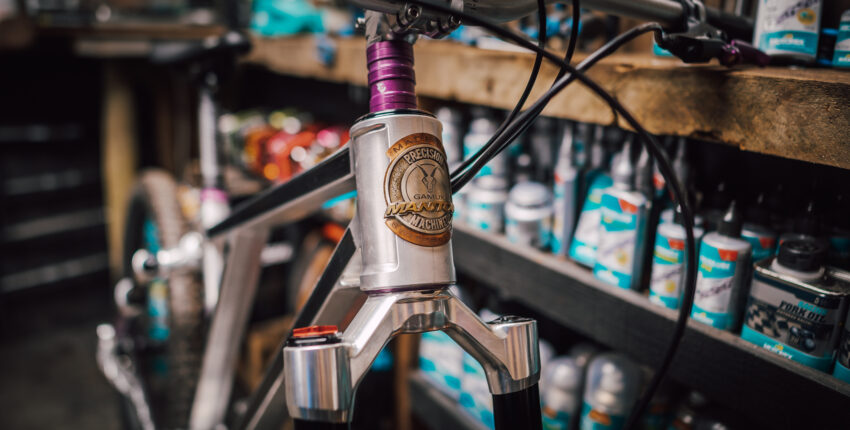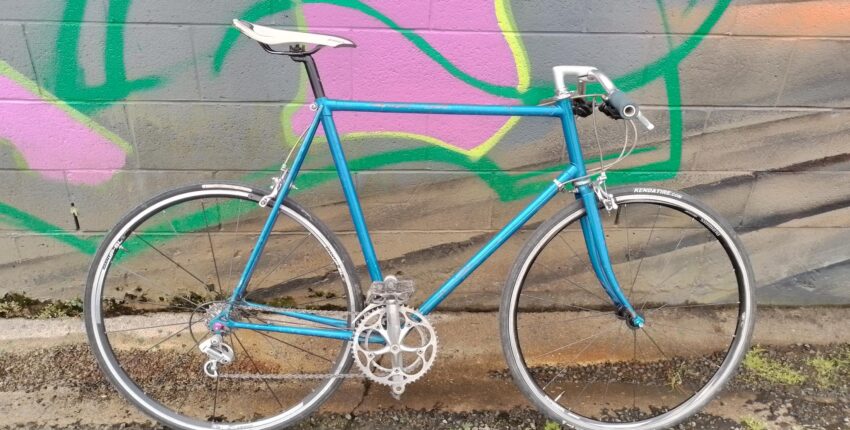TPC Museum Series: Juli Furtado’s Yeti FRO
We love The Pros Closet‘s Museum Series here at ChainSlap. They have produced a series of videos looking at some of the coolest and most important bikes of the last 20 to 30 years, both mountain and road, which were ridden by significant Pros to some pretty big victories in the annals of racing.
One of their first Museum exhibits is the Yeti FRO (For Racing Only) of Juli Furtado, ridden to the very first UCI cross-country World Championship in Durango Colorado in 1990. You’ll hear old-timers herald the era as the Golden Age of mountain biking, which it seemed at the time with all the technological developments that a fledgling sport is prone to undergo. Furtado’s bike sports the very best tech available at the time, and while it’s the pinnacle of bicycles at the time, it also makes one realise how far we’ve come, and how talented these athletes were to be able to ride these machines with the speed and style they did.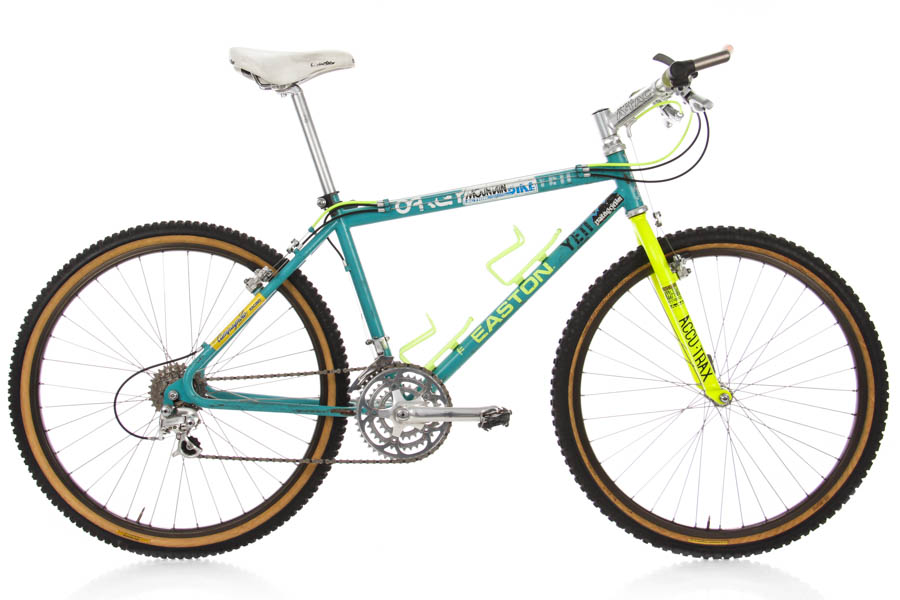
The FRO may look industrial and basic by today’s standards, but in 1990 it was at the cutting edge of mtb tech. The Easton-branded frame featured ‘oversized’ double-butted steel tubing that would be considered spindly now, but was one of the lightest and stiffest tubesets among the still-dominant steel frames. The frame was welded by Chris Herting of Yeti, who built some of the most iconic race bikes of the era.
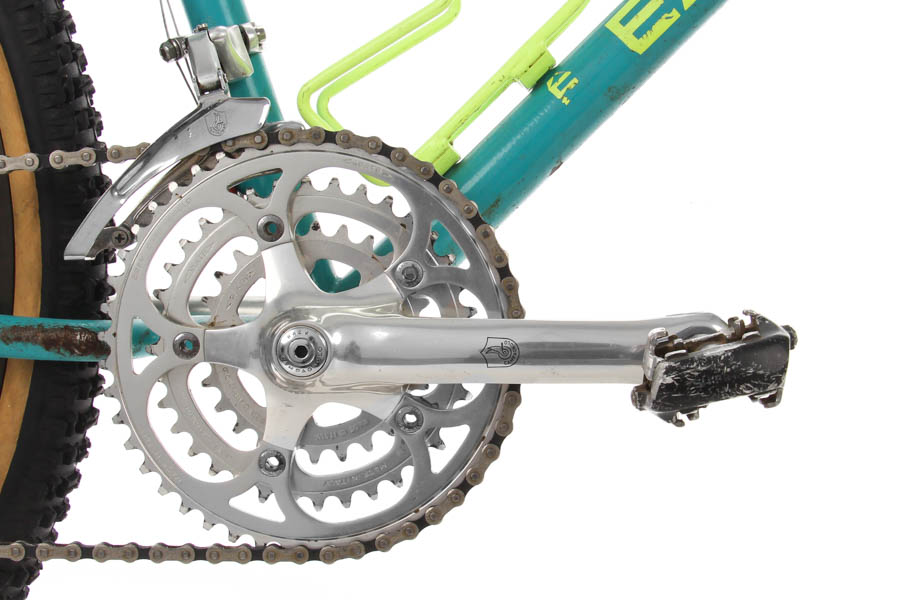
One of the most unusual features of Juli’s bike is the full Campagnolo Euclid groupset, which, while typically beautiful to look at, didn’t work quite as well. Chainrings came in threes and had real tooth counts, in this case a 26/36/46. Campa gave up on the dirt gruppo soon after, never to be seen again as an off-road component maker. They still rule the road world though!
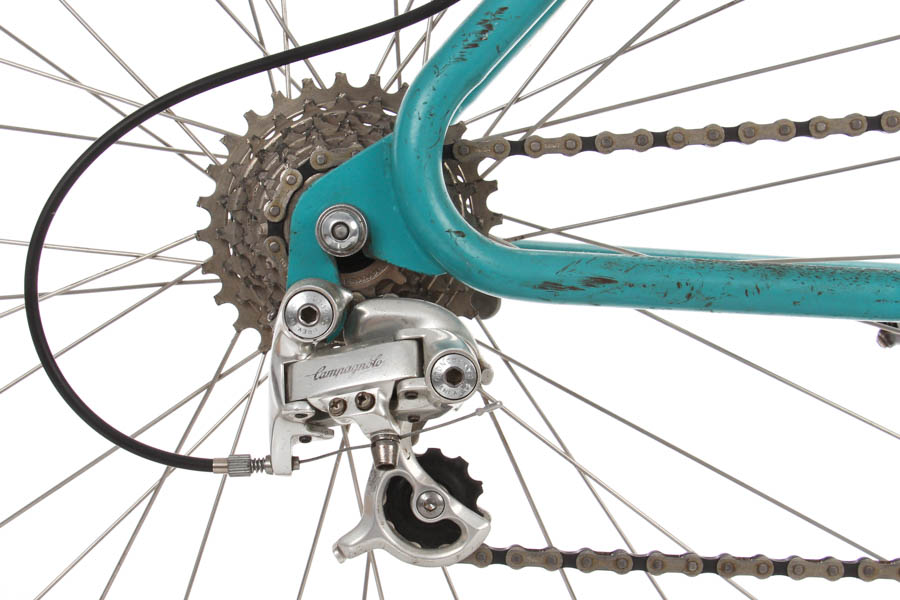
Yeti’s trademark ‘Looptail’ one-piece seat/chainstays are 4130 cromoly steel, joined to a agricultural looking dropout with no replaceable derailleur hanger. Bend your hanger and your frame is toasty, or up for a repair job (one of the benefits of steel tubing). The Euclid derailleur moved the chain across a 7-speed 13-28 cassette, and like all Campa components is a bona fide work of art.
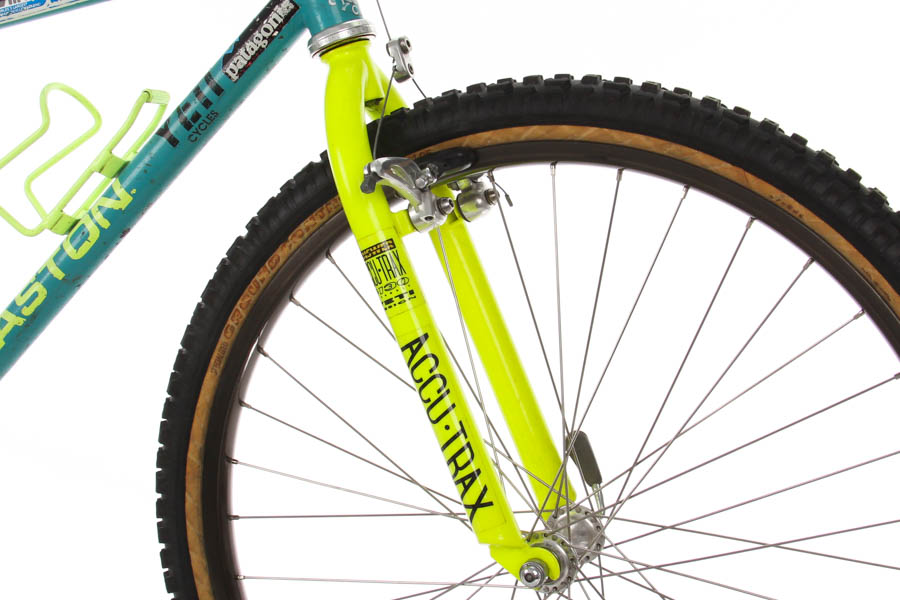
No squish here. The Answer Racing Accu-Trax fork was the one to have back before suspension development really kicked off. My arms are going numb just looking at it.
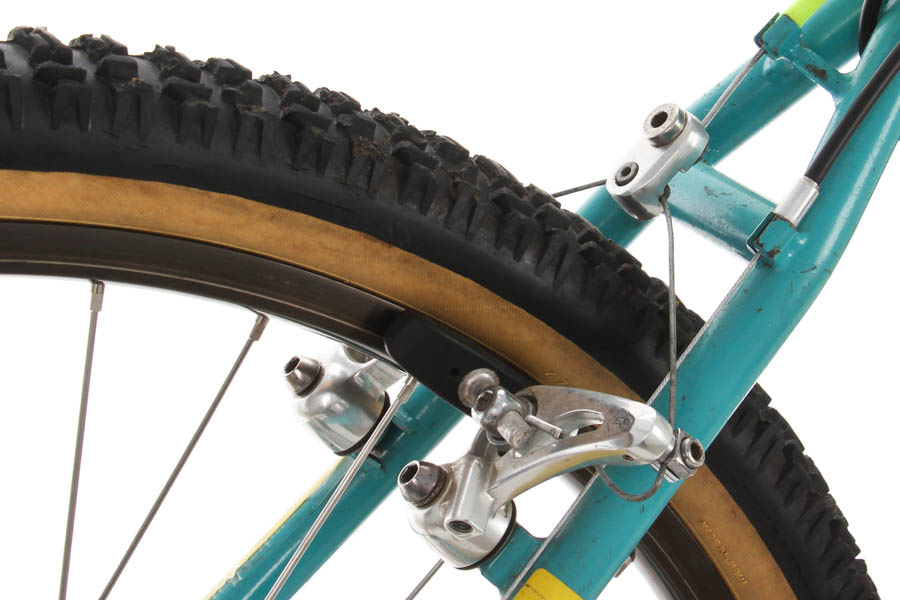
Cantilevers were king, and once again the Campas were great to look at but not much chop for stopping. In fact, most cantis were shown up as useless once the V-brake came into being, which was similarly made redundant by discs.

A beautiful Euclid cromo seatpost supports the Selle Italia Turbo saddle, an iconic seat still today. Cable routing was the top-tube “guitar” style, to keep the exposed cables away from mud and dust. The seatpost collar was custom made for this bike.
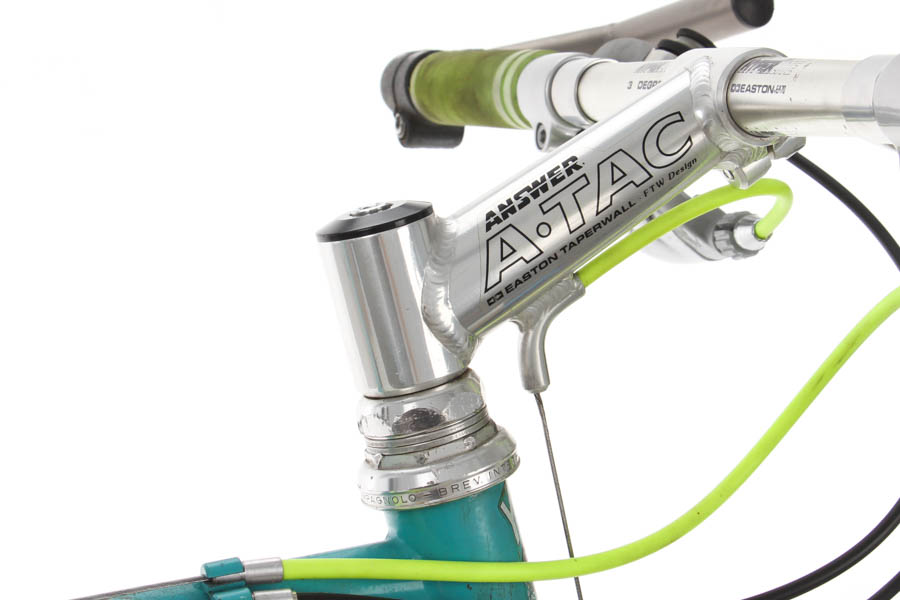
We’d bet that the Campa headset is still as smooth as it was 25 years ago. Looks like it’s had a bit of hamfisting from a headset wrench though. ATAC stems are another 90s icon, this one is a quill version with the cable hanger for the front brake, but Answer kept the stems in production with threadless versions which were still the best looking stems around.
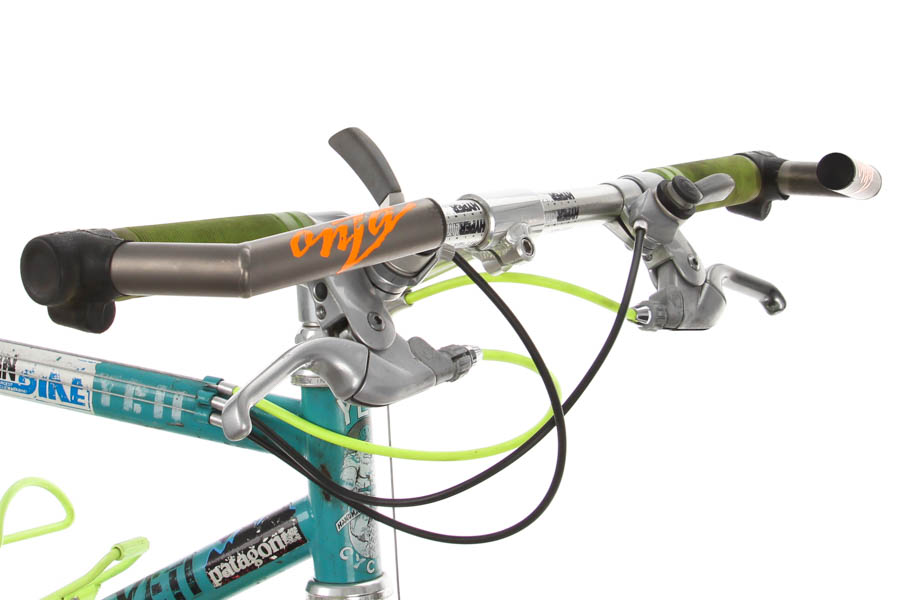
The 90s cockpit bears little resemblance to a modern set-up; Answer Hyperlite bars were impressively light, probably more due to them being about 580mm wide! Then the Onza titanium bar ends knock another 10mm of each side, add on the massive Campa Centaur brake levers (jewelry again) and thumb shifters, and there wasn’t much space between your hands! ODI grips with the same pattern as modern ones show that some things just work and keep on doing so.
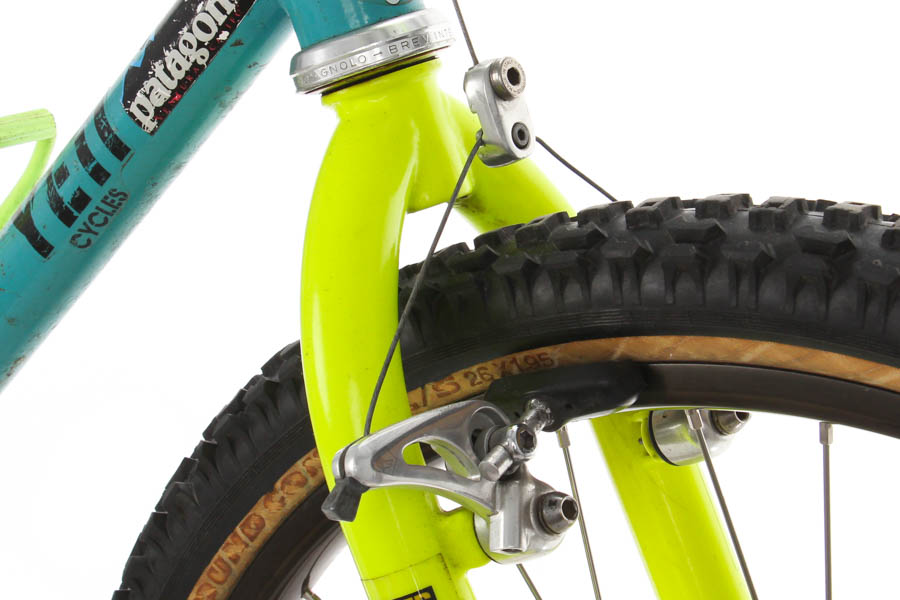
Specialized supplied the rims and tyres, with double wall 36 hole alloy rims and Ground Control 26×1.95 rubber.

